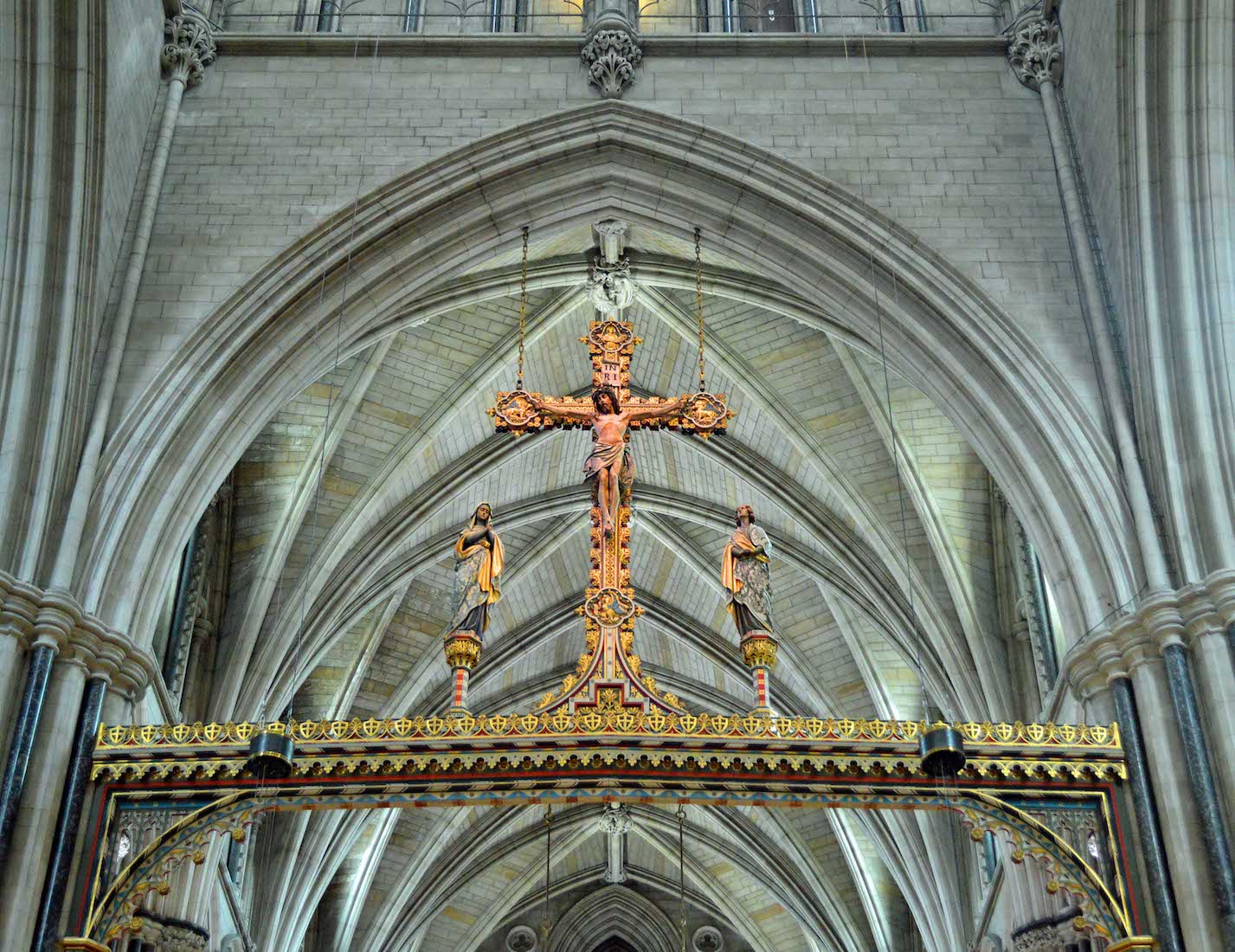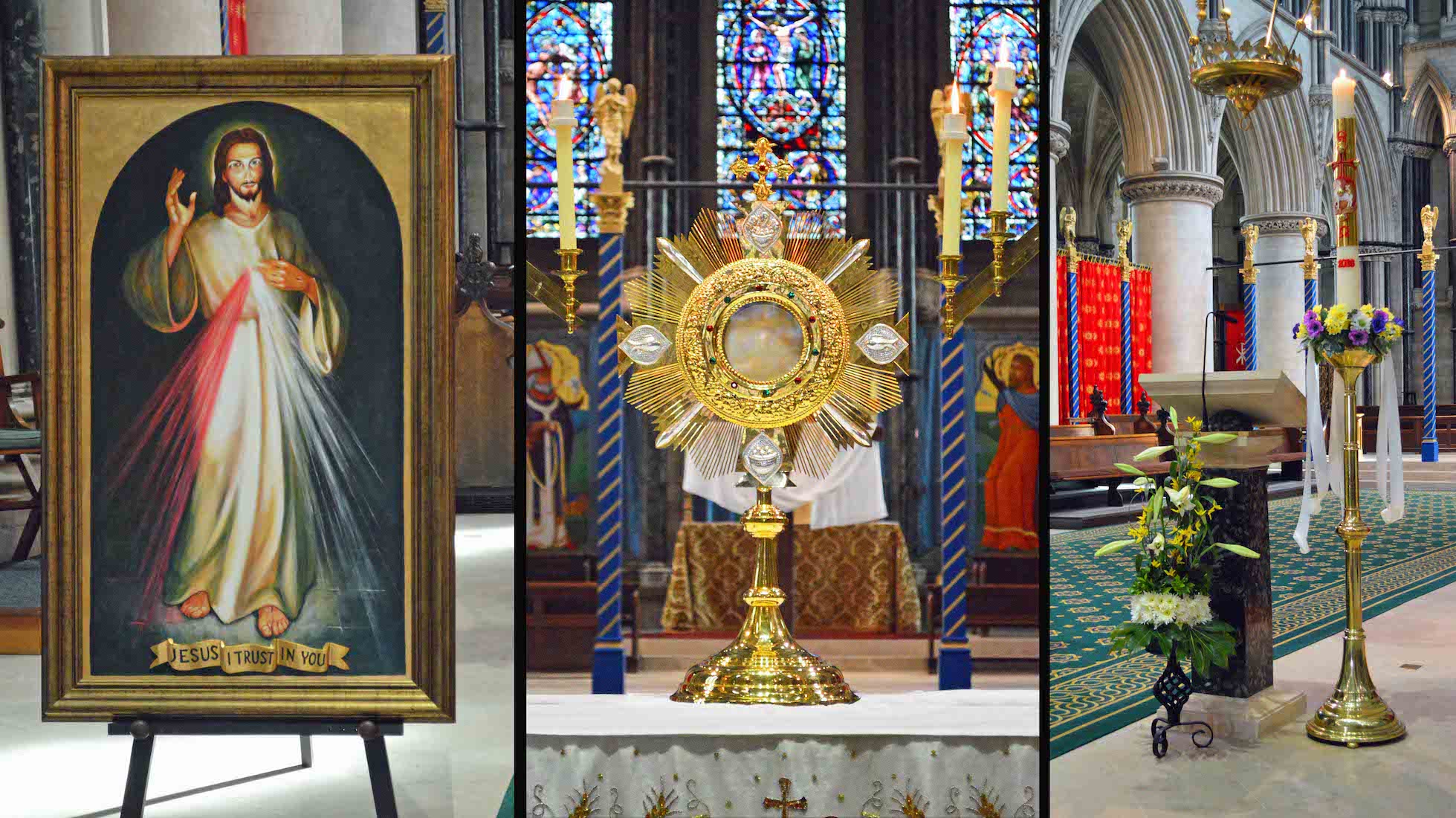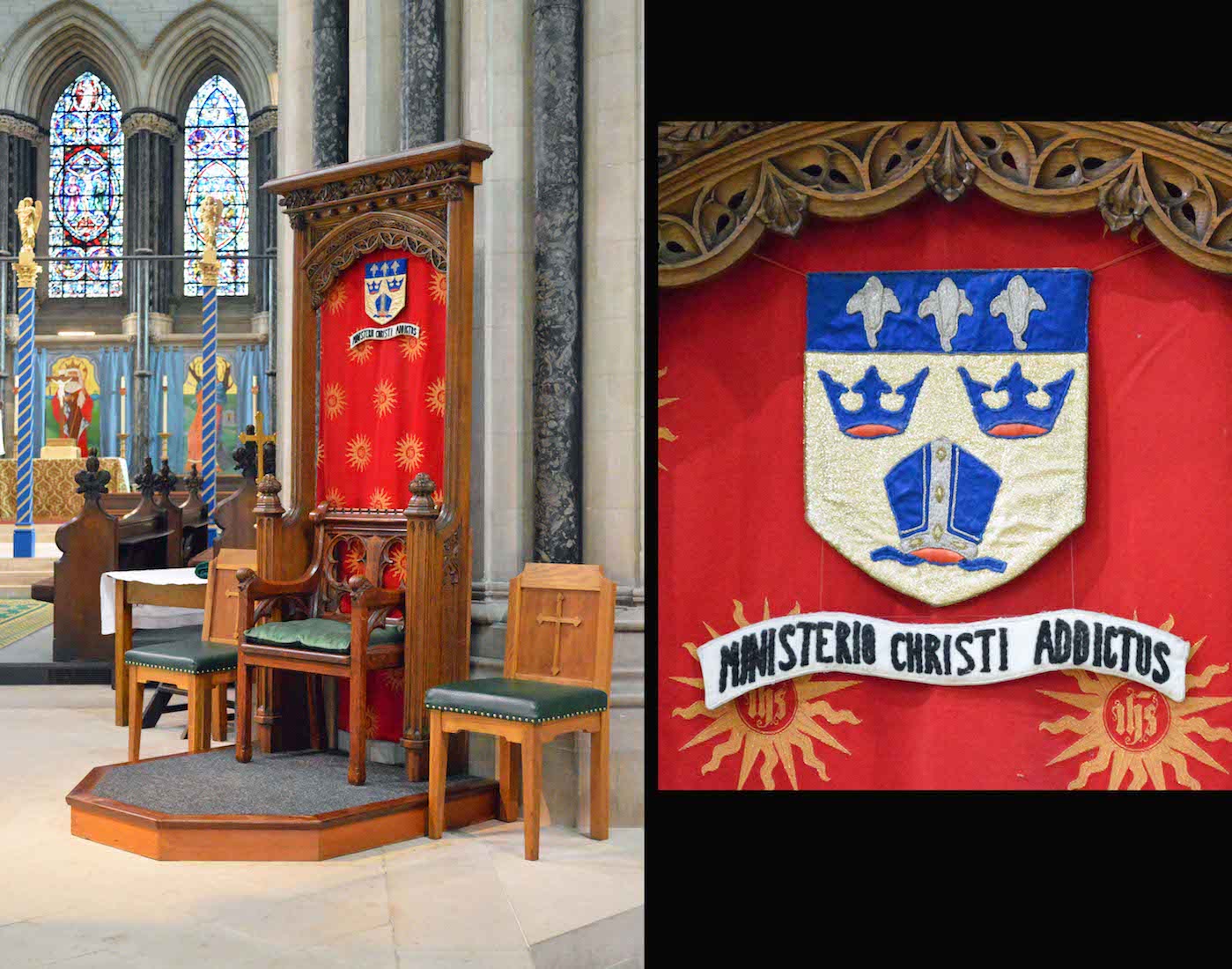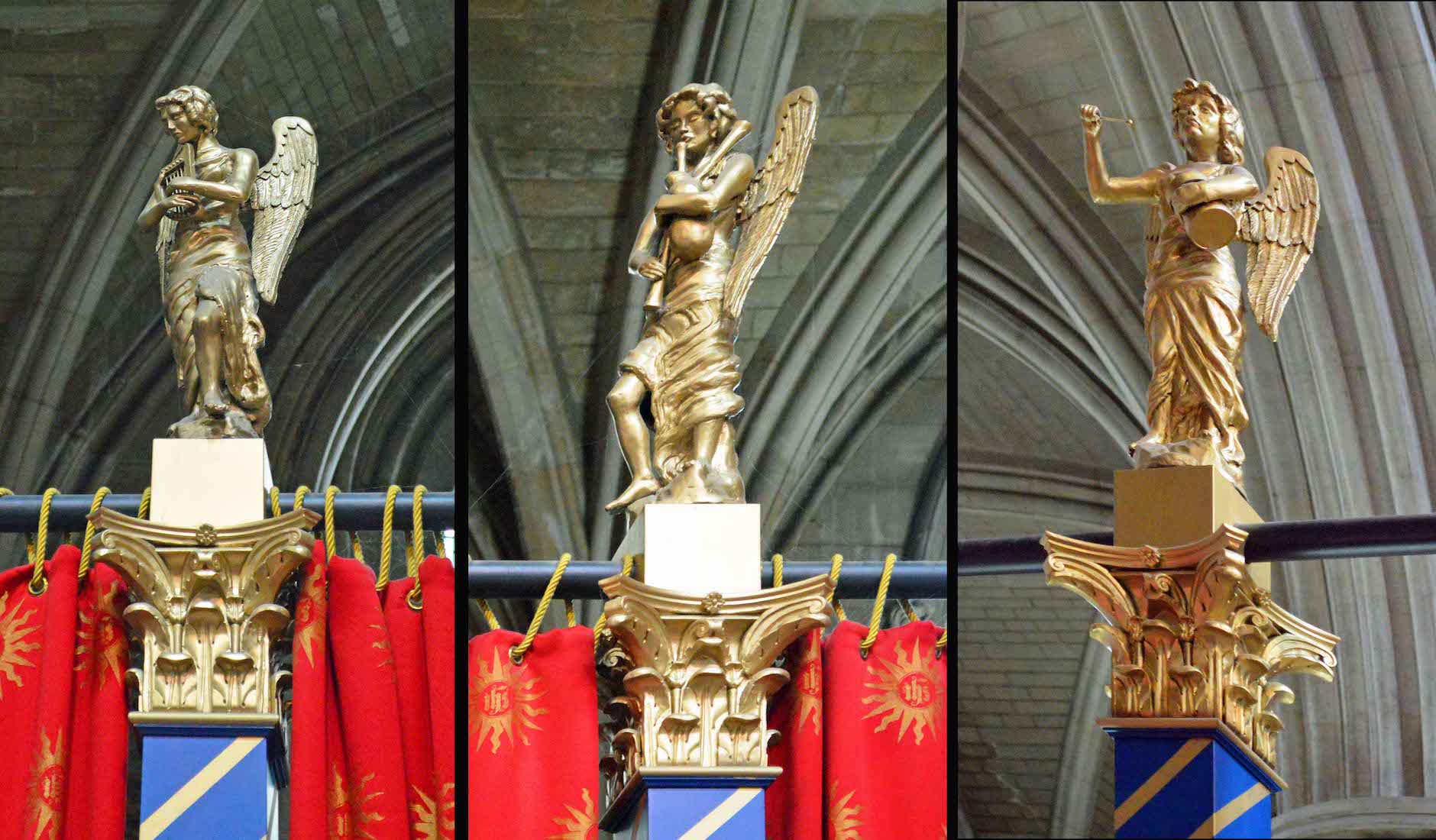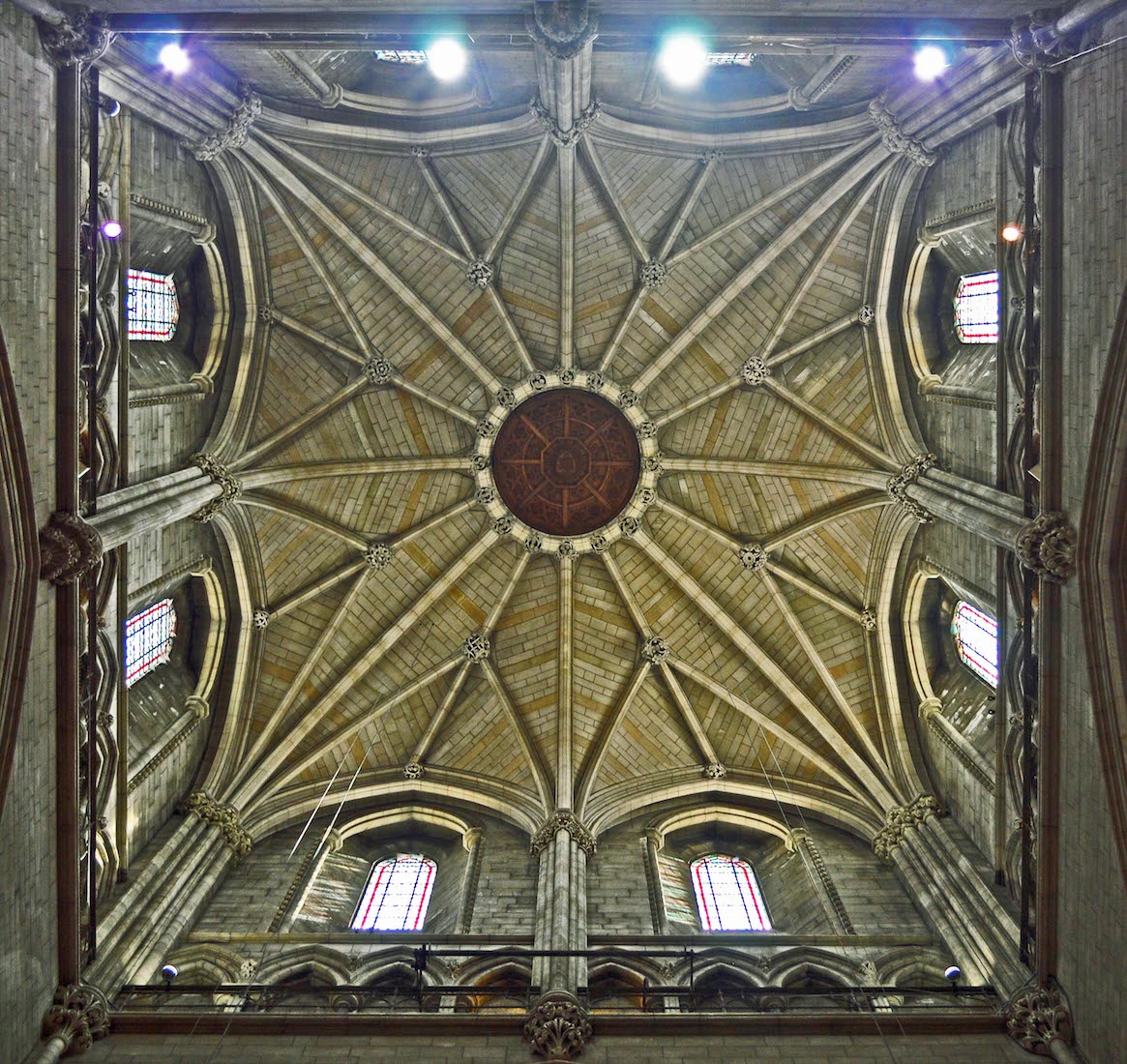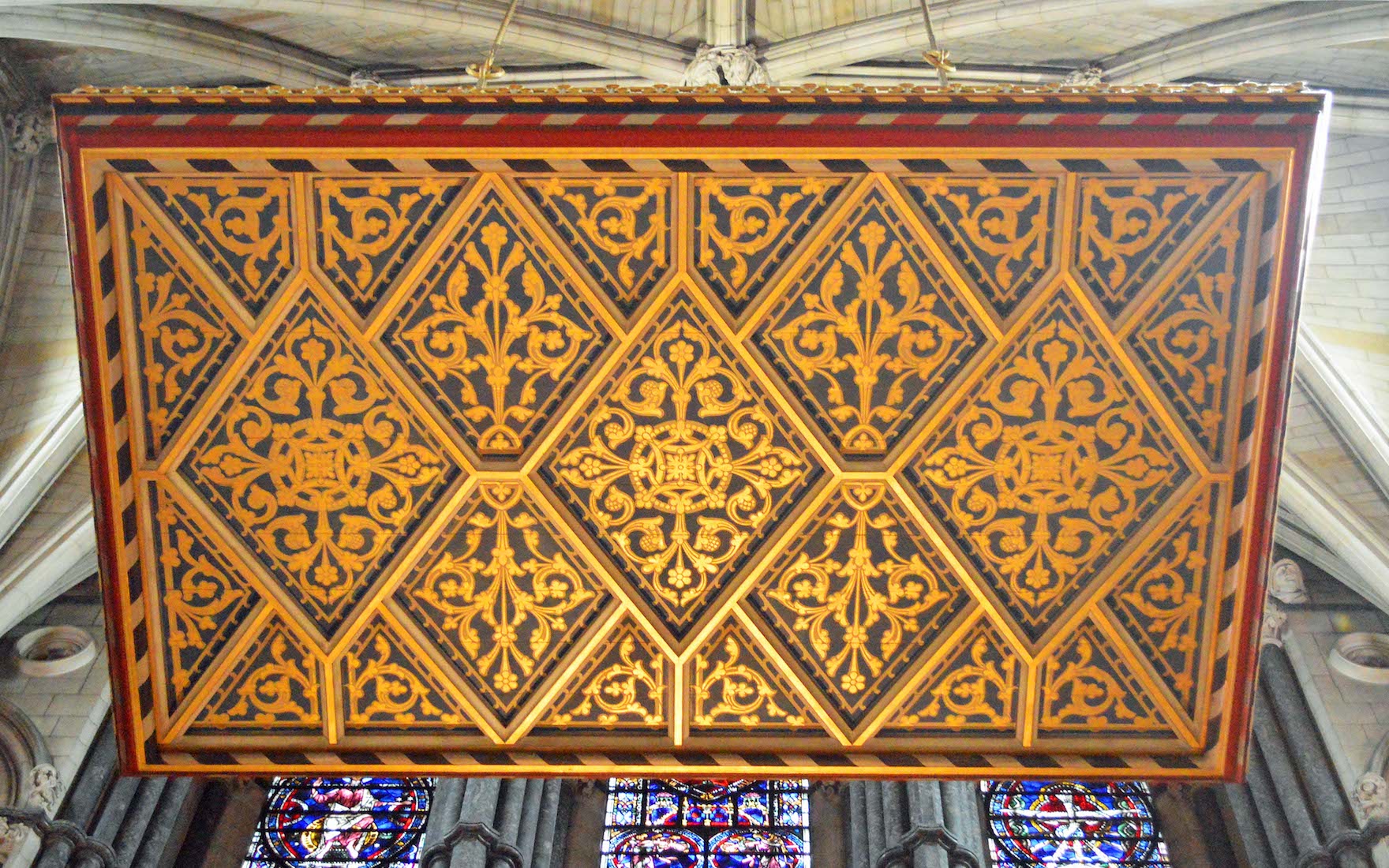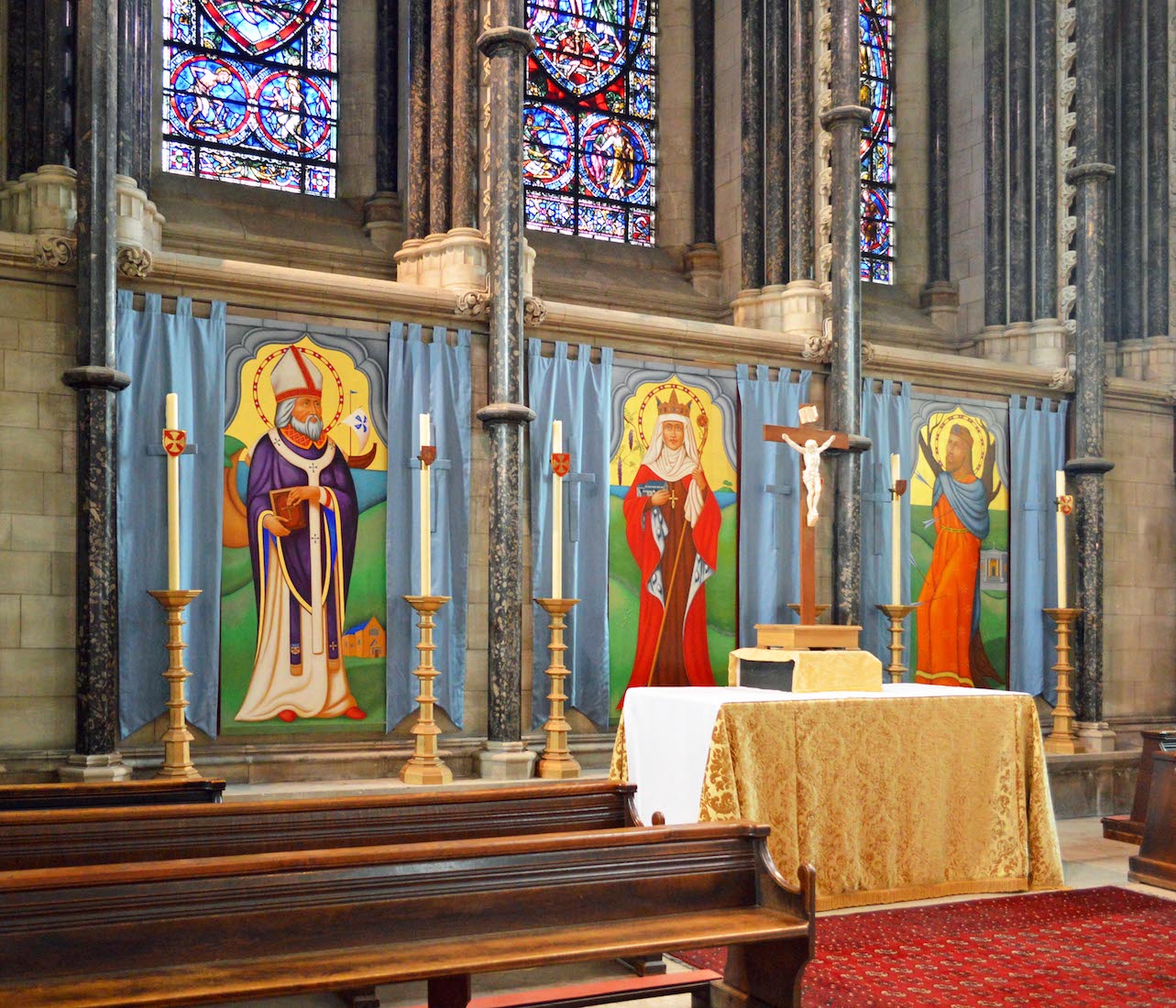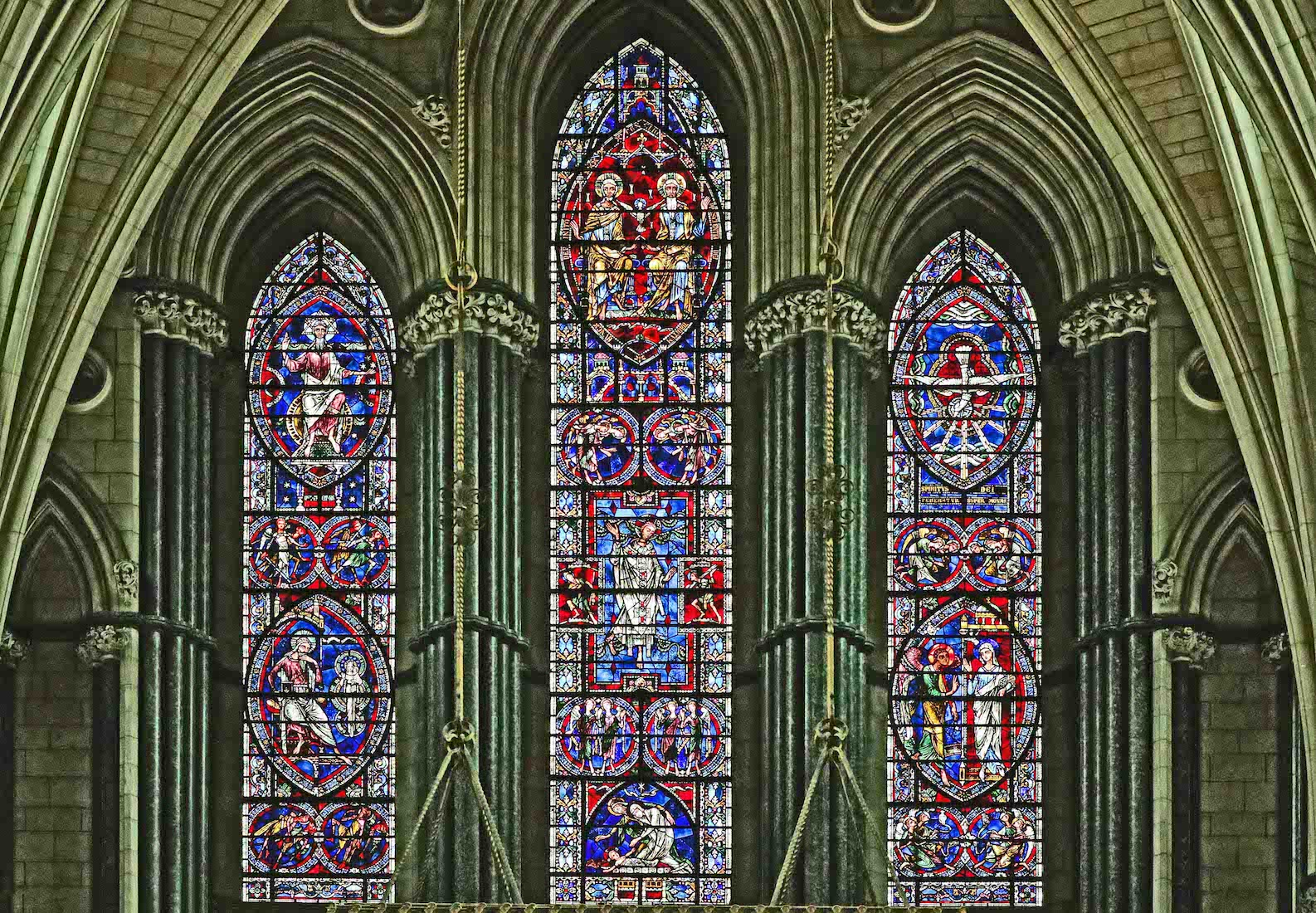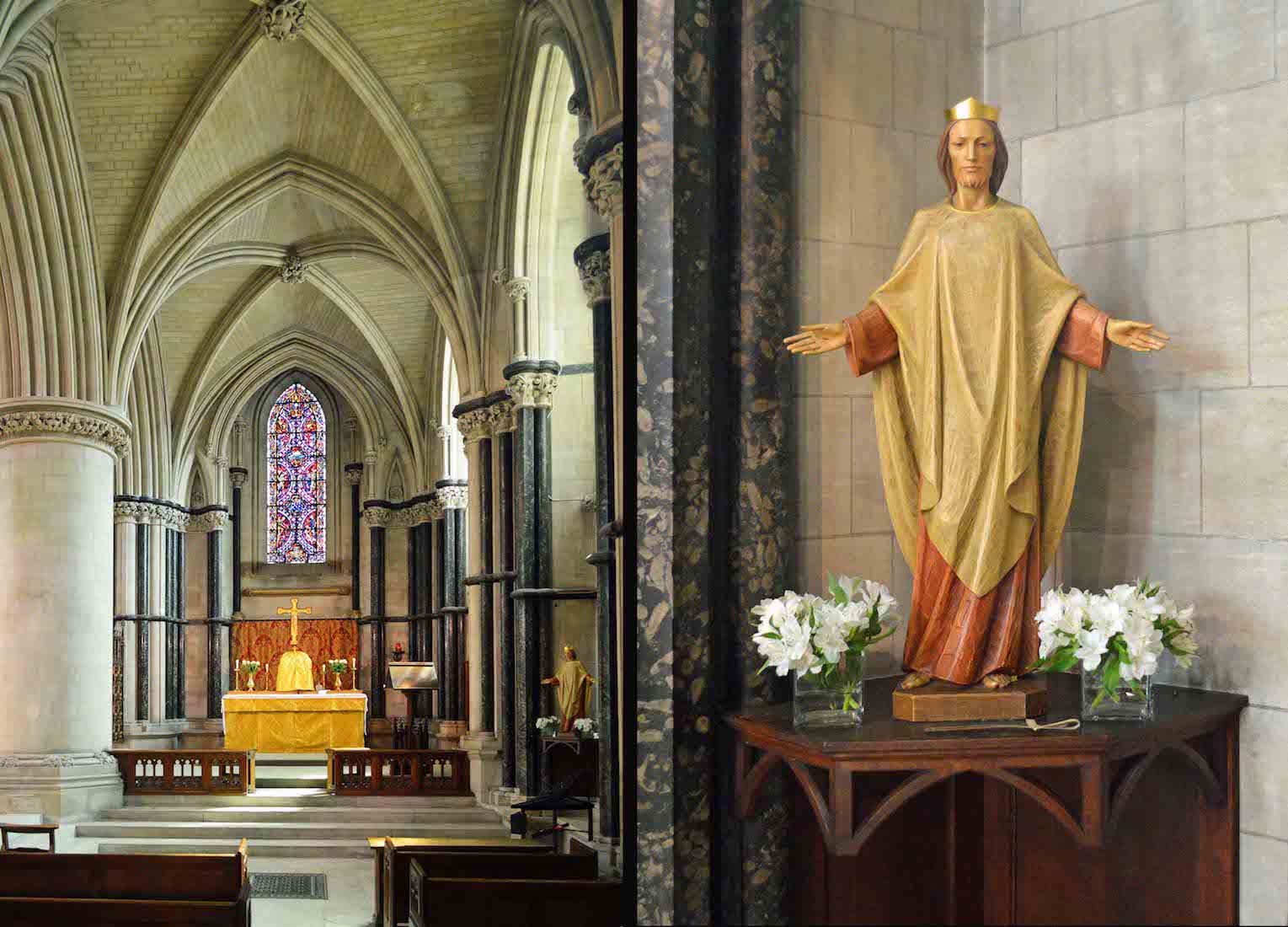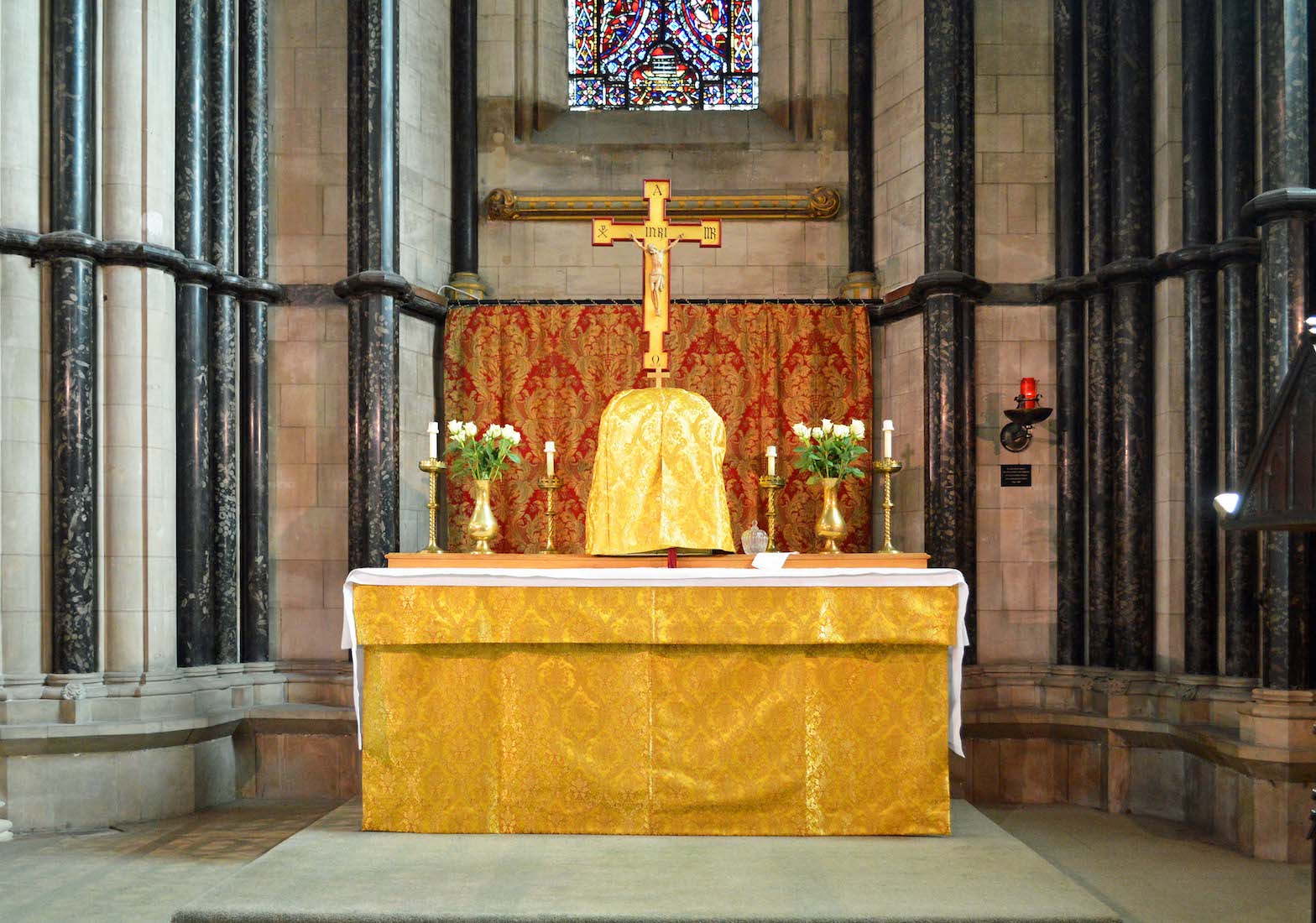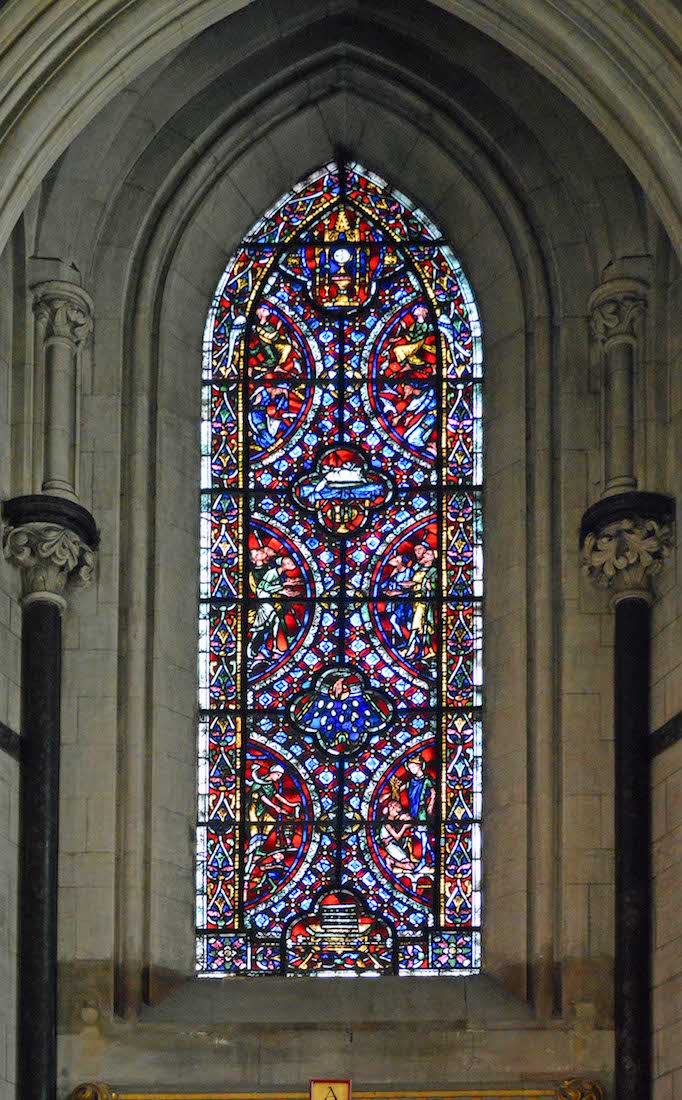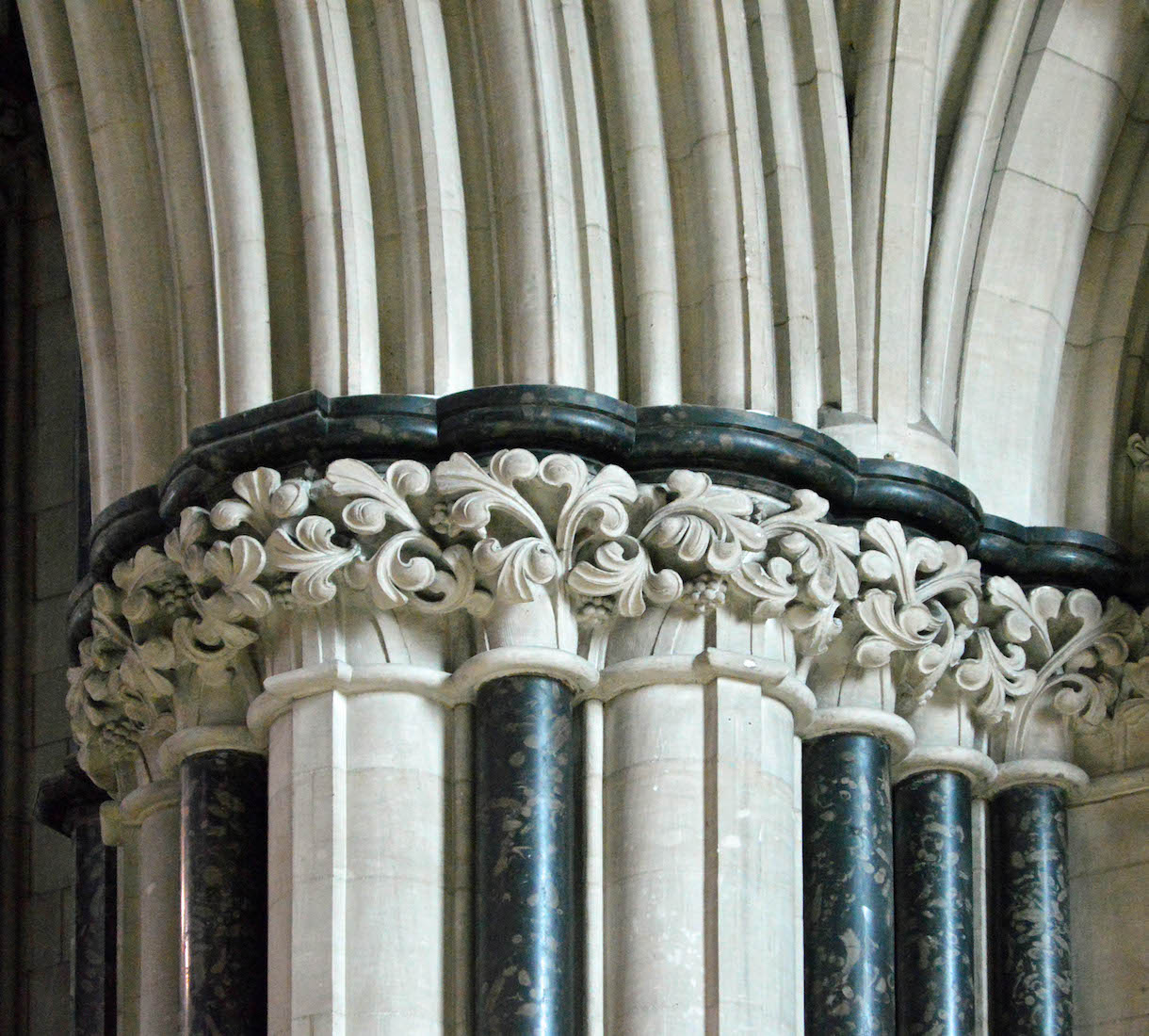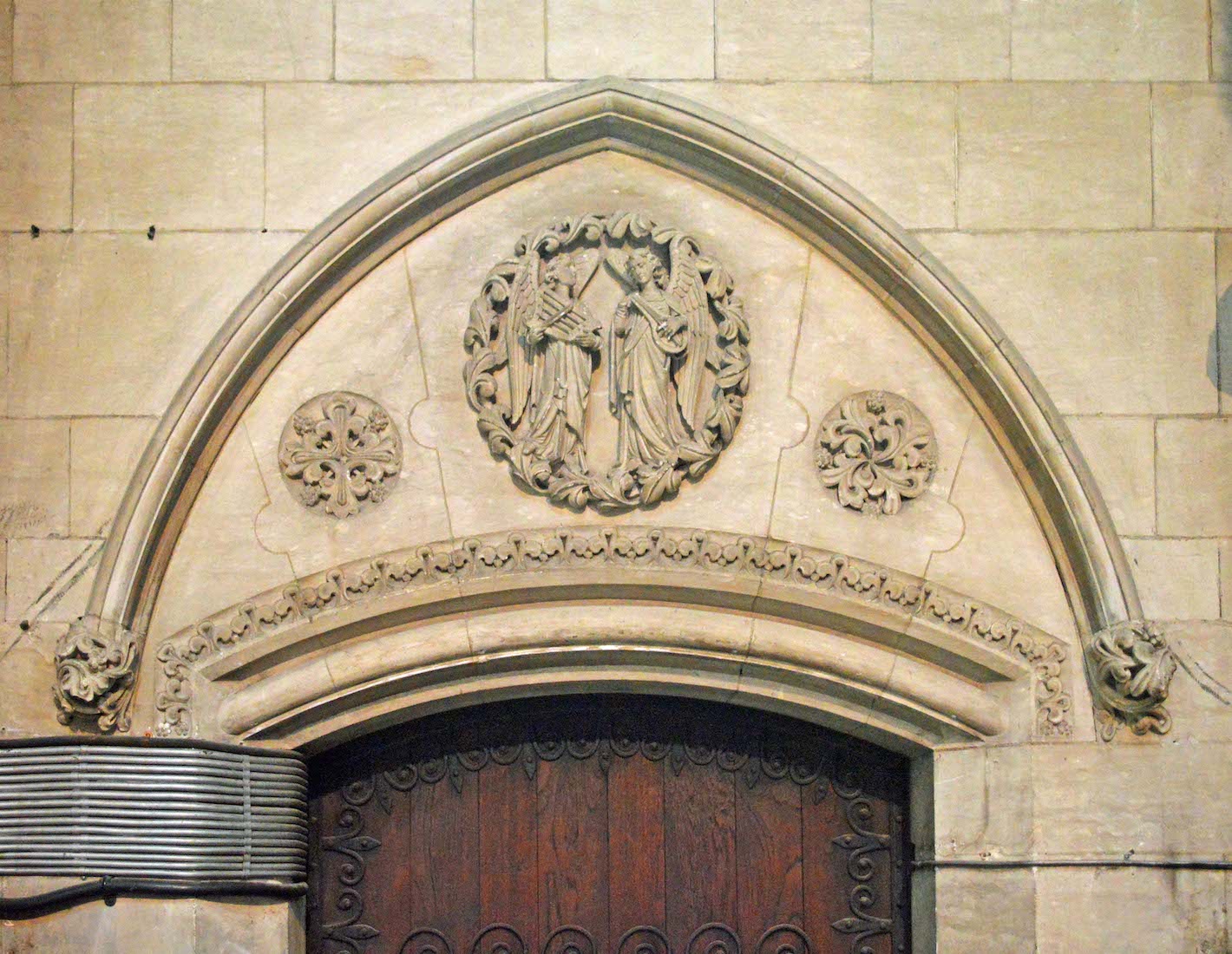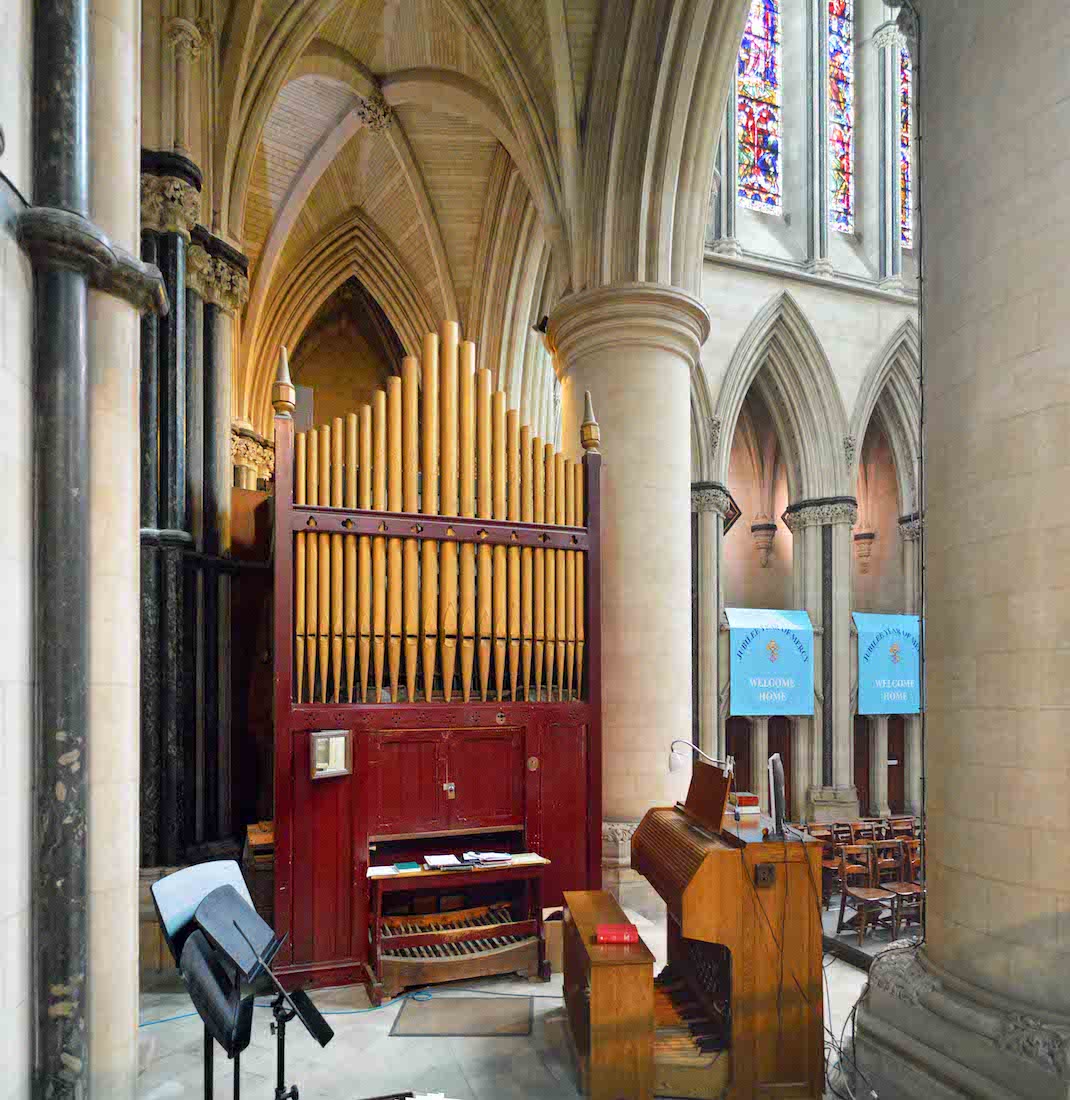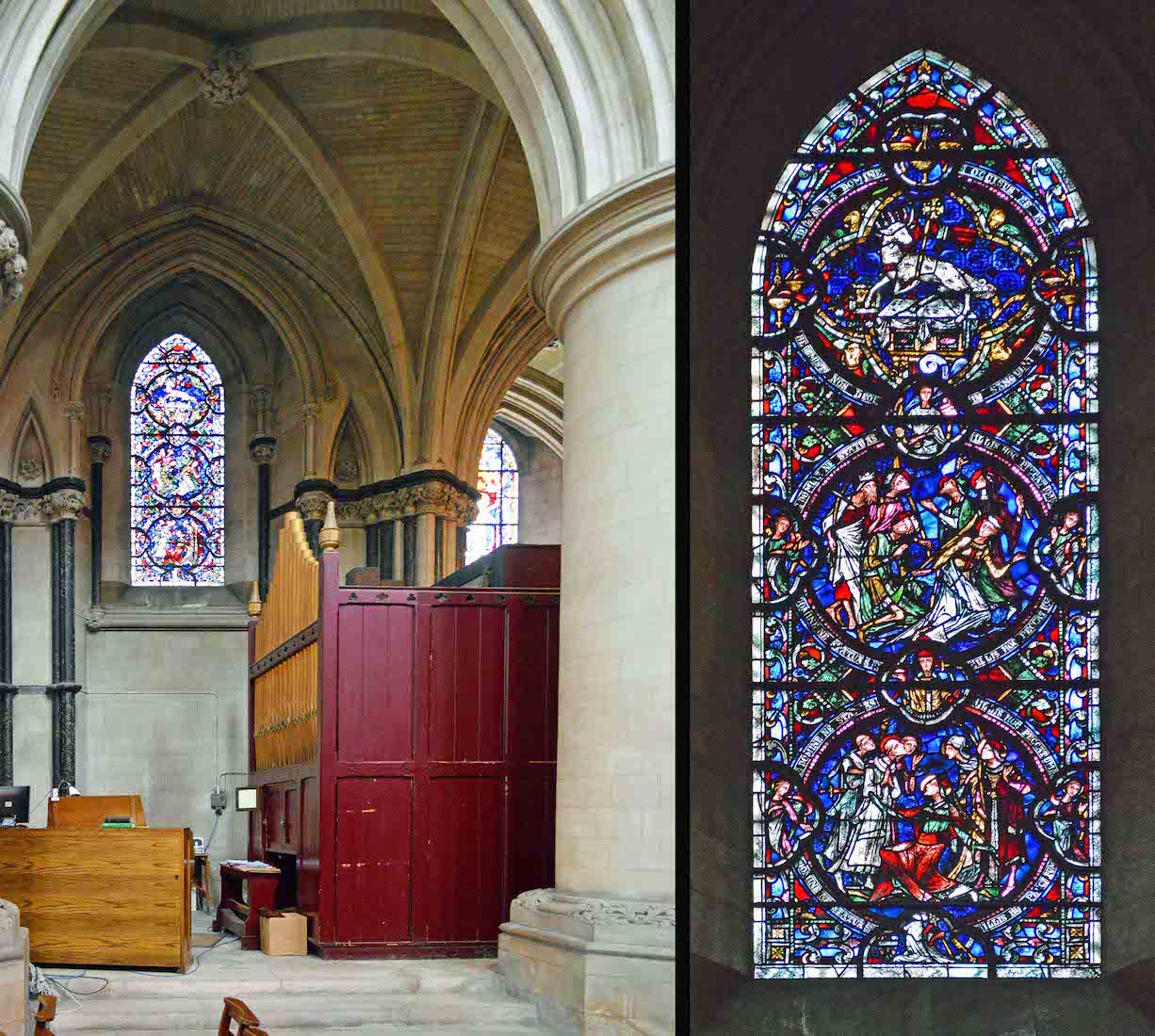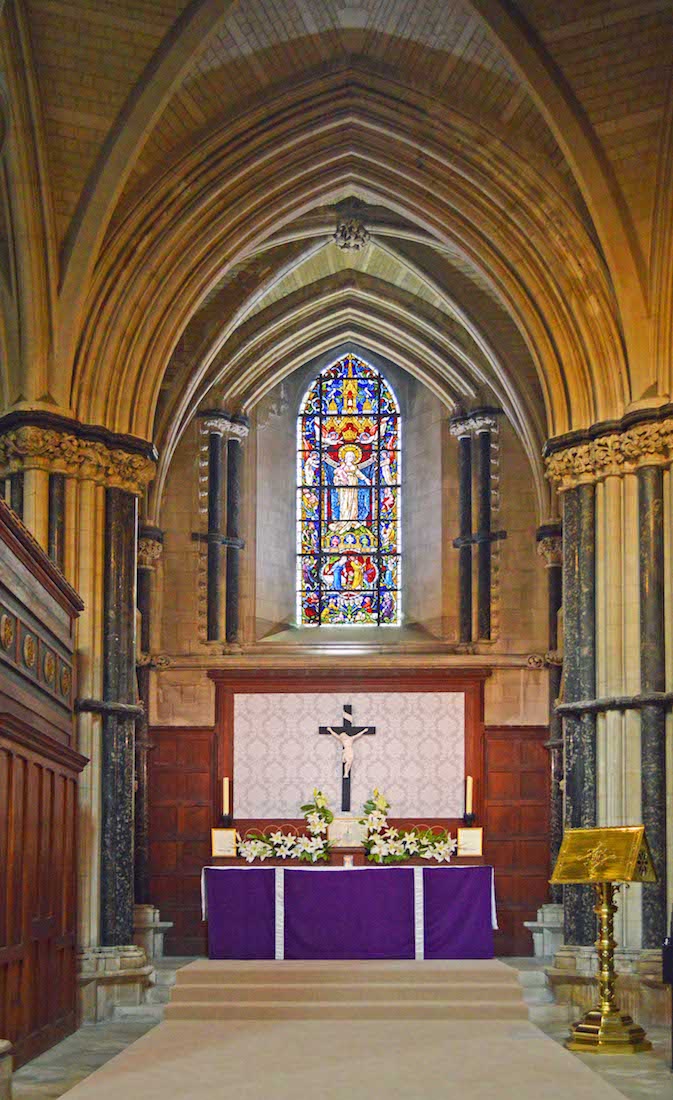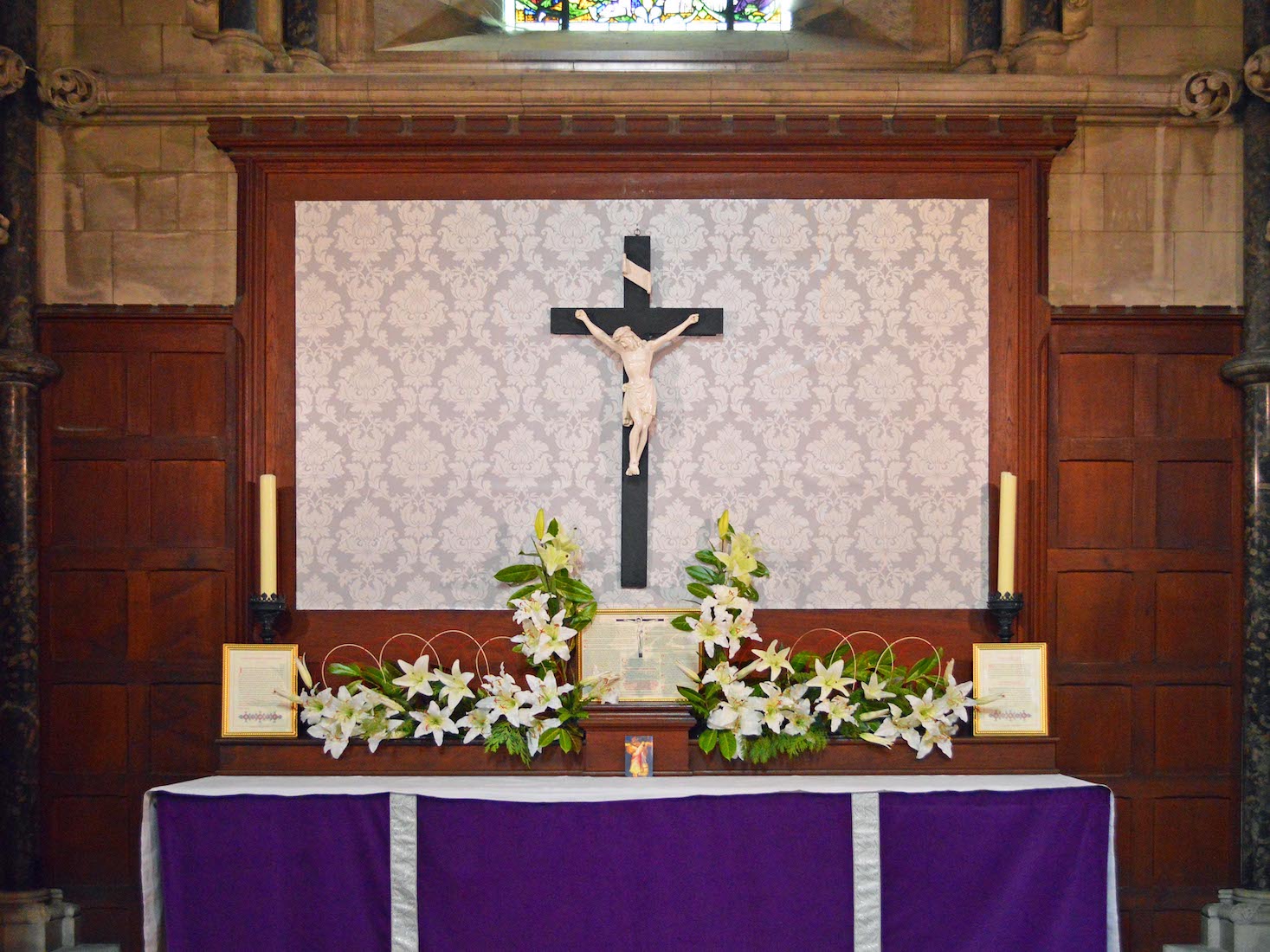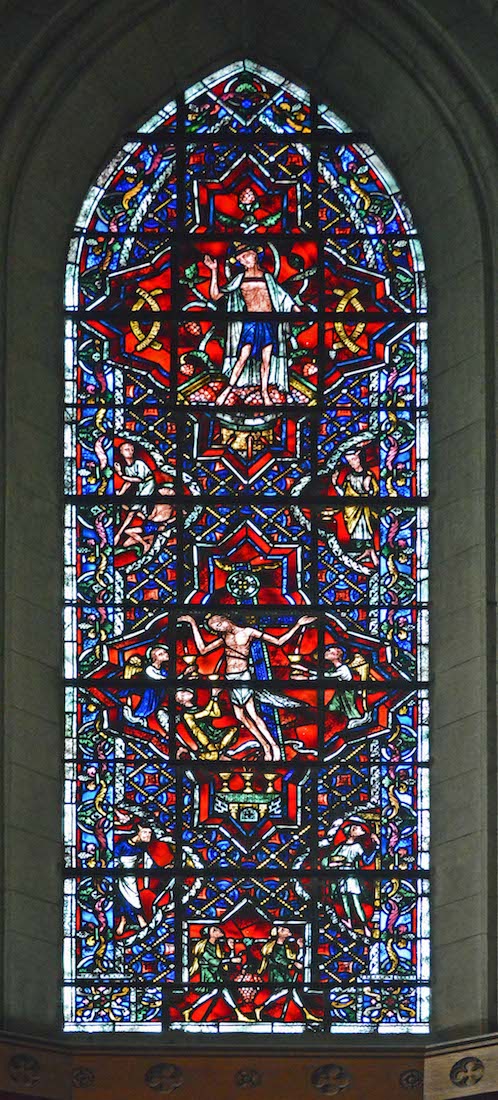
This, ‘The Precious Blood Window’, contains many references to its main theme. The two large images depict Christ treading grapes (wine being an allegory for Christ’s blood) and Christ on the cross, shedding blood which is being collected in chalices held by angels. The smaller scenes depict various biblical stories, including Moses striking the Rock, the voice of Abel’s blood and the grapes from the Promised Land. PLAN
42. SANCTUARY AREA
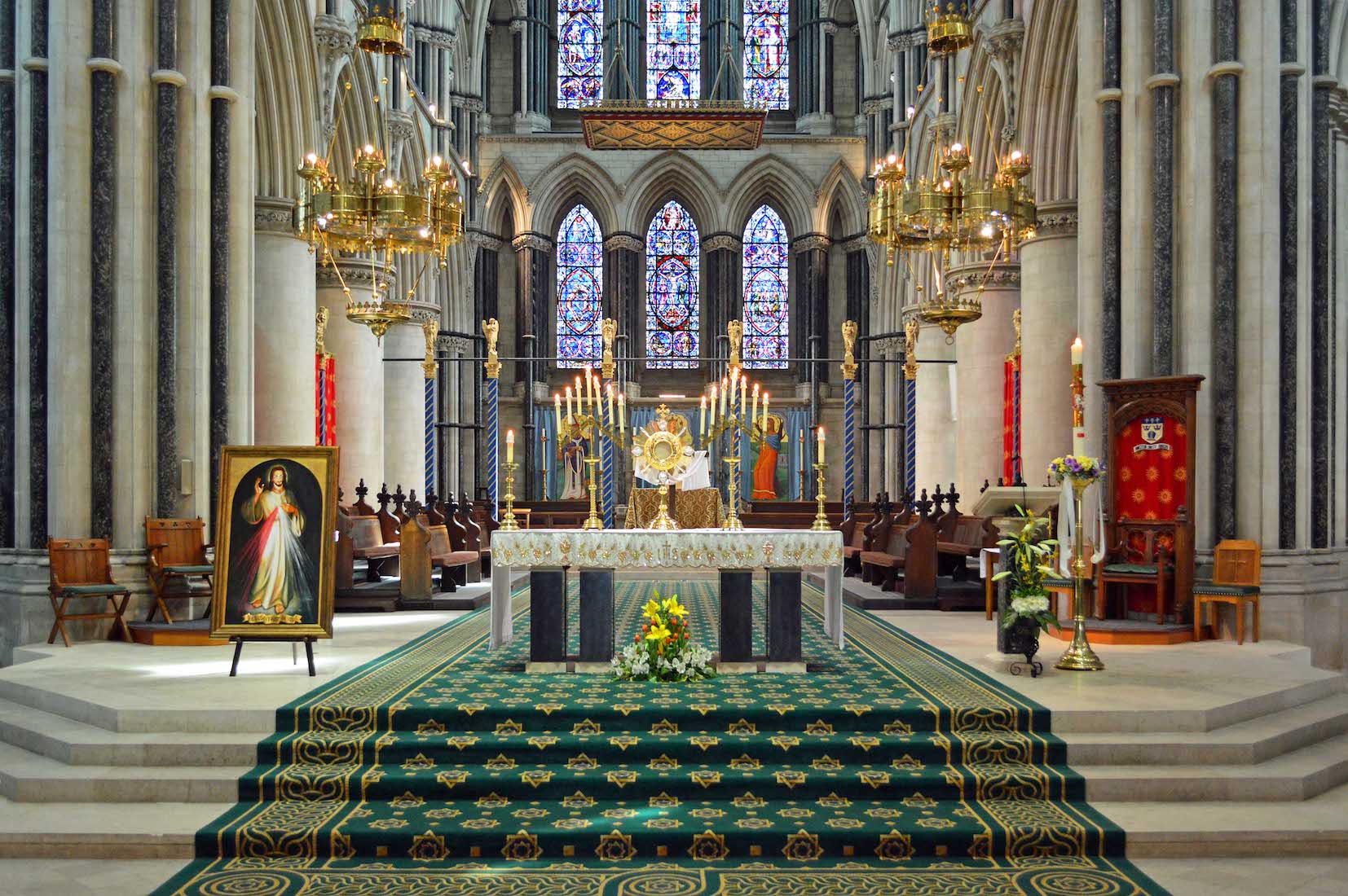
What a lovely sight! The cantral altar with candlesticks and monstrance, and the East window behind. To the left a picture of the Divine Mercy image, and to the right an ambo and Paschal candle, with cathedra behind. Two golden candelabra hang from above, and the area is guarded behind by golden angels on red and blue supports.
43. ROOD CROSS
High up, at the back of the crossing, is the rood cross – a representation of the crucifixion with Christ on the cross and St Mary and St John keeping vigil. ‘Rood’ is an archaic word for pole, from the Old English. It was originally the only Old English word for the instrument of Jesus Christ's death.
44. DIVINE MERCY, MONSTRANCE, AMBO
‘The Divine Mercy’ image is a depiction of Jesus based on the devotion initiated by Saint Faustina Kowalska. The red and white rays streaming out symolize blood and water. The monstrance is a container for holding the bread and wine served in the Eucharist. ‘Ambo’ is a peculiarly Catholic word used for a lectern or small pulpit. Next to this ambo is a Paschal candle, usually lit close to Easter in connection with the Passoveer.
45. CATHEDRA
A Bishop, placed with authority over a Diocese, is based at a particular church. The symbol of this placement is a special seat or throne. In Latin this is called a ‘cathedra’ and it is from here that the chosen church takes the title of cathedral. The coat of arms on a cathedra is usually that of the Bishop or Diocese. The Latin text reads: Assigned to the Ministry of Christ.
46. GUARDIAN ANGELS
These golden angels, protecting the rear of the sanctuary, appear to have musical talents!
47. CROSSING
From the crossing we can look up into the tower lantern. Dominating the crossing is the magnificent wooden painted rood, carved by Peter Rendl of Oberammergau, one of the principal players in its Passion Play early in the 20th century. There is a circular trapdoor in the centre, used for hoisting up building materials. The tower is some 38.5 metres (125 feet) tall. The tower was still being built in the early 1900s while the nave was in use.
48. HIGH ALTAR CANOPY
After Vatican II in the early 1960s, the central nave altar became the focus of worship. This ornate sounding board would have hung over the high altar, just in front of the East windows. This end of the Cathedral has now become the Chapel of East Anglian Saints.
49. CHAPEL OF EAST ANGLIAN SAINTS
Behind this altar is a modern painting of St. Felix, St. Etheldreda, and St. Edmund. This chapel is used for daily masses and is flooded with light and color by the stained-glass above. Felix of Burgundy (died 647 or 648), was a saint and the first bishop of the East Angles. Etheldreda (c. 636 – 679) was an East Anglian princess, a Fenland and Northumbrian queen and Abbess of Ely. Edmund the Martyr who died in 869 was king of East Anglia from about 855 until his death.
50. LOWER EAST WINDOWS
The magnificent triple lancet East ‘Holy Trinity’ window by Dunstan Powell portrays God’s love for mankind. God the Father is represented on the left, God the Son at centre, and God the Holy Spirit at right. A closer look at the window reveals a wealth of imagery: for example Adam and Eve toiling in the garden, and the disciples arriving to find the empty tomb. The window can also be entitled ‘Creation, Redemption and Sanctification of Man’.
51. UPPER EAST WINDOWS
Left light: The Eternal Father in creation. Centre light: The top medallion shows the Holy Trinity – ‘Let us make man’. Below are the High Priest and Victim, and below the Birth at Bethlehem. Right light: At top, the Holy Spirit moves over the face of the waters. Below, the Annunciation. The three bottom panels across show Our Lady’s relation to the Holy Trinity as Daughter, Mother and Spouse. [Photo credit: Mike Dixon]
52. BLESSED SACRAMENT CHAPEL
This chapel lies just South of the Chapel of East Anglian Saints. In front of the window is a crucifix and the altar bearing the tabernacle and candlesticks. To the right is the figure of the Risen Christ, the King. In many cathedrals there would be a statue of the Sacred Heart here, and careful examination of this image will reveal a very faint Sacred Heart. It is nicely done.
53. BLESSED SACRAMENT CHAPEL ALTAR
The Blessed Sacrament is a devotional name used to refer to the sacramental bread and wine after they have been consecrated at celebration of the sacrament of the Eucharist. These elements are kept here in the covered tabernacle on the altar.
54. BLESSED SACRAMENT CHAPEL WINDOW
This window contains many allegorical references to the Blessed Sacrament, in particular relating to the rite of Holy Communion when Catholics believe that bread is turned into the body of Christ. At the apex is the ‘bread of life’ being adored by angels. Beneath we see various biblical scenes along the same theme, including: Elias being fed by ravens; the sacrificial Lamb of God; manna falling from heaven; and Joseph dispensing corn in Egypt. At the base are ‘loaves of proposition’ also called ‘holy bread’.
55. COLUMNS
One of the real highlights of the interior of this Cathedral is the use of the Frosterley marble for the moulded columns. The marble lends a magnificent depth of colour that gives a sense of depth and solidity to the interior.
56. ORGAN DOORWAY
This doorway near the organ has a fine musical motif in the gable, and a great number of wires!
57. ORGAN
Rare amongst Cathedrals, the organ originally designed for St John’s never made it to Norwich, but instead was installed in the chapel of St Peter-in-Chains in the Tower of London. After the Tower of London organ was replaced, the pipes were finally returned to Norwich, Queen Elizabeth II donated the pipes to the Cathedral, and they have remained in storage here ever since. The present Norman and Beard Organ was moved here from the Maddermarket Church when it closed.
58. ORGAN AREA
The organ occupies its own little area in the Cathedral, and there is a stained glass window behind. The main images in this ‘Window of the English Martyrs’ are: the Lamb of God on a sacrificial altar (top); representations of early English martyrs (middle); martyrs who were beatified by Pope Leo XIII, who is also represented kneeling at the base (bottom). Other images include St Michael with a thurible and angels who are represented as reapers. On an inscription we read the cry made by St Stephen after he was stoned: ‘Lord lay not this sin to their charge.’
59. MEMORIAL CHAPEL
Moving across past the organ we come to the Memorial Chapel. This chapel also has a stained glass window with an altar in front. The altar with its dark purple cloth is backed by a white screen and a strikingly dramatic crucifix.
60. MEMORIAL CHAPEL ALTAR
On the altar are an arrangement of lilies and two candlesticks. The Chapel is in memory of those members of St John’s who died in the First World War, and the altar is a fitting tribute.


